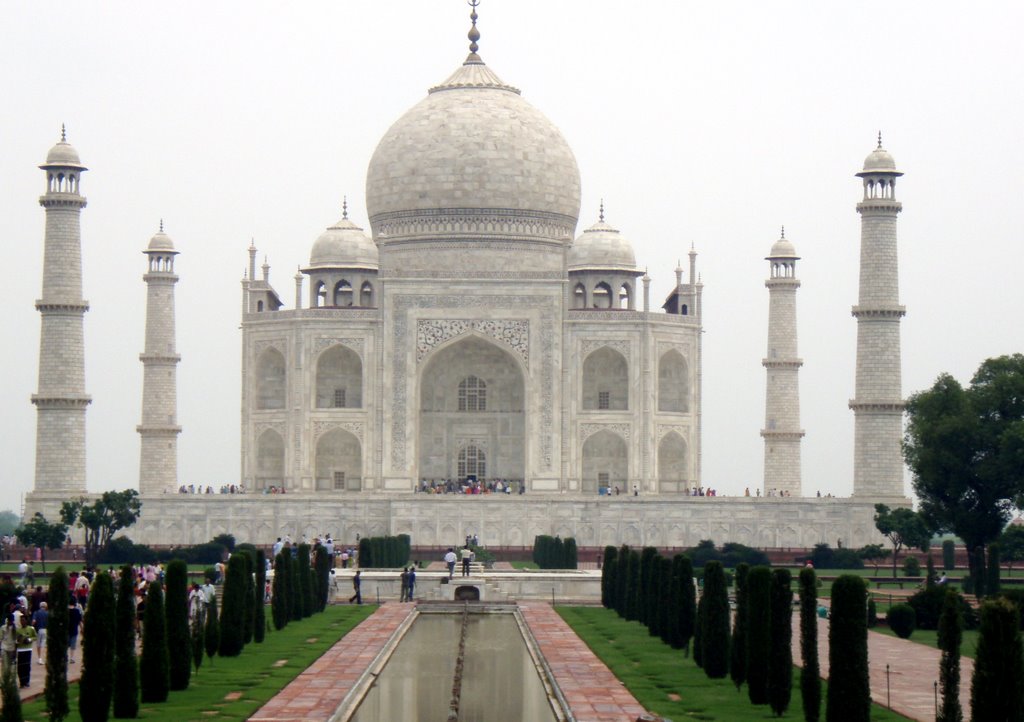I'm posting this article in its entirety because I think it's very relevant to Public Health.
U.S. no longer tallest country in world
By MATT CRENSON, AP National WriterSun Jul 15, 12:22 PM ET
America used to be the tallest country in the world. From the days of the founding fathers right on through the industrial revolution and two world wars, Americans literally towered over other nations. In a land of boundless open spaces and limitless natural abundance, the young nation transformed its increasing wealth into human growth.
But just as it has in so many other arenas, America's predominance in height hasfaded. Americans reached a height plateau after World War II, gradually falling behind the rest of the world as it continued growing taller.
By the time the baby boomers reached adulthood in the 1960s, most northern and western European countries had caught up with and surpassed the United States. Young adults in Japan and other prosperous Asian countries now stand nearly as tall as Americans do.
Even residents of the formerly communist East Germany are taller than Americans today. In Holland, the tallest country in the world, the typical man now measures 6 feet, a good two inches more than his average American counterpart.
Compare that to 1850, when the situation was reversed. Not just the Dutch but all the nations of western Europe stood 2 1/2 inches shorter than their American brethren.
Does it really matter? Does being taller give the Dutch any advantage over say, the Chinese (men 5 feet, 4.9 inches; women 5 feet, 0.8 inches) or the Brazilians (men 5 feet, 6.5 inches; women 5 feet, 3 inches)?
Many economists would argue that it does matter, because height is correlated with numerous measures of a population's well-being. Tall people are healthier, wealthier and live longer than short people. Some researchers have even suggested that tall people are more intelligent.
It's not that being tall actually makes you smarter, richer or healthier. It's that the same things that make you tall — a nutritious diet, good prenatal care and a healthy childhood — also benefit you in those other ways.
That makes height a good indicator for economists who are interested in measuring how well a nation provides for its citizens during their prime growing years. With one simple, easily collected statistic, economists can essentially measure how well a society prepares its children for life.
"This is the part of the society that usually eludes economists, because economists are usually thinking about income. And this is the part of the society that doesn't earn an income," said John Komlos, an economic historian at the University of Munich who was born in Hungary, grew up in Chicago, and has spent the last quarter century compiling data on the heights of nations.
Height tells you about a segment of the population that is invisible to traditional economic statistics. Children don't have jobs or own houses. They don't buy durable goods, or invest in the stock market. But obviously, investments in their well-being are critical to a nation's economic future.
For several years now, Komlos and other researchers have been trying to figure out exactly why the United States fell behind. How could the wealthiest country in the world, during the most robust economic expansion in its history, simply stop growing?
"It's absolutely fascinating," said Eileen Crimmins, a demographer at the University of Southern California. "Maybe we've reached the point where we're going to go backwards in height."
Like many human traits, an individual's height is determined by a mix of genes and environment. Some experts put the contribution of genes at 40 percent, some at 70 percent, some even higher. But they all agree that aside from African pygmies and a few similar exceptions, most populations have about the same genetic potential for height.
That leaves environment to determine the differences in height between populations around the world, specifically the environment children experience from the moment of conception through adolescence. Any deficiency along the way, from poor prenatal care to early childhood disease or malnutrition, can prevent a person from reaching his or her full genetic height potential.
"We know environment can affect heights by three, four, five inches," said Richard H. Steckel, an Ohio State University economist who has also done research on height trends in the United States during the 19th century.
The earliest stages of life are the most important to the human growth machine; at age 2 there is already about a 70 percent correlation between a child's height and his or her eventual adult stature.
All of this means a population's average height is a very sensitive indicator of its most vulnerable members' welfare.
Not surprisingly, rich countries tend to be taller simply because they have more resources to spend on feeding and caring for their children. But wealth doesn't necessarily guarantee that a society will give its children what they need to thrive.
In the Czech Republic, per capita income is barely half of what it is in the United States. Even so, Czechs are taller than Americans. So are Belgians, who collect 84 percent as much income as Americans.
And those height differences translate into real benefits. A number of studies have shown that disease and malnutrition early in life — the same things that limit a person's height — increase a person's chances of developing heart disease and other life-shortening conditions later on. Though tall people are more likely to get cancer, they suffer less mortality overall than short people.
International statistics bear it out. Life expectancy in the Netherlands is 79.11 years; in Sweden it's 80.63. America's life expectancy of 78.00 years puts it in somewhat shorter company, just above Cyprus and a few notches below Bosnia-Herzegovina.
"Obviously America is not doing badly. It's not at the level of developing nations," Komlos said. "But it's also not doing as well as it could."
His latest research paper, published in the June issue of Social Science Quarterly, suggests the blame may lie with America's poor diet and its expensive, inequitable health-care system.
"American children might consume more meals prepared outside of the home, more fast food rich in fat, high in energy density and low in essential micronutrients," wrote Komlos and co-author Benjamin E. Lauderdale of Princeton University. "Furthermore, the European welfare states provide a more comprehensive social safety net including universal health care coverage."
In the United States, by comparison, an estimated 9 million children have no health insurance.
Komlos' most recent data indicate a small uptick in the heights of white Americans born between 1975 and 1983, a suggestion that the gap may finally be closing. But there has been no similar increase among blacks, a suggestion that inequality may indeed play a significant role in the height gap.
In another recent paper, Komlos and Lauderdale also found height inequality between American urbanites and residents of suburbs and rural areas. In Kansas, for example, white males are about as tall as their European peers; it's big cities like New York, where men are about 1.75 inches shorter than that, that drag America's average down.
Now Komlos has started comparing the heights of children to determine at what age Americans begin falling behind their peers across the Atlantic. Not surprisingly, he sees a difference from birth, an observation that suggests prenatal care may be significant contributor factor to the height gap.
But it is unlikely that Komlos will ever find one simple factor to explain why Americans have fallen behind other rich countries in height. In all likelihood it is caused by a combination of things — a little bit health care, some diet, a sprinkling of economic inequality.
"In some ways it gets to the fundamentals of the American society, namely what is the ideology of the American society and what are the shortcomings of that ideology," Komlos said. "I would argue that to take good care of its children is not part of that ideology."
Whether that's true is debatable; the height gap doesn't measure how much Americans love their children. But at a minimum it does indicate — in raw feet and inches — whether the nation is giving its youngsters what they need to reach their full biological potential, or selling them short.







































